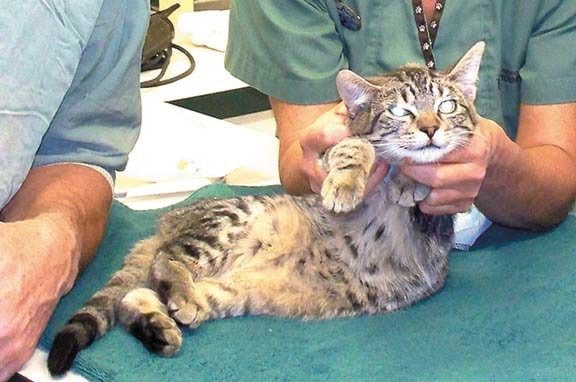Trevor Crawley
Cranbrook has a cat problem. "Cat problem" may be a bit extreme, but the city has one of the highest cat populations per capita in the province, according to Brenna Baker, the manager of the B.C. SPCA East Kootenay branch.
With that in mind, Baker approached the city at a council meeting on Monday night to help promote a cat spay and neuter program.
Last June, the East Kootenay SPCA branch received a $83,000 PetSmart grant and has only spent $20,000 to date.
Baker is hoping to give the funding a little more profile, which allows the SPCA to spay and neuter stray cats as well as cats that the public bring in who may not be able to afford the procedure.
For low-income people who want to spay and neuter their cat, they can bring it in to the SPCA and staff will make an appointment at a local veterinarian and give them a voucher. The SPCA asks for a $40 donation, however, that can be waived if it's unaffordable to the cat owner.
"So, we know that low-income residents are half as likely to spay and neuter their animals with affordability, accessibility and attitude ranking the highest barriers to getting their animals spayed and neutered and this is why we're launching this funding," said Baker.
Last year, the East Kootenay SPCA branch took in 552 cats and kittens: 214 of which were surrendered by owners, the rest were strays.
She cited the success that Port Alberni experienced with a spay and neuter program, noting that their cat intake went down 47 per cent between 2014-15.
“That is a huge difference in such a short time. I can already see a little bit happening in Cranbrook with the little bit that we’ve been able to do,” Baker continued.
Specifically, Baker is hoping to partner wit the city to raise awareness about the program, whether that be advertising on the website or brochures included in monthly utility bills.
In addition to the spay and neuter program, Baker touts the convenience of a permanent ID system that uses microchipping to help return stray pets to their proper owners.
It is a system that needs to be established through city bylaws.
“We get so many strays in that don’t get returned to owners,” Baker said. “You know they’re owned, they’re beautiful cats, they’re healthy, they sit in our shelter for a stray hold, which legally is only three days. We usually hold them for seven if feel that they’re owned by somebody, hoping that somebody would come forward.”
With a microchipping system, stray cats (and/or dogs), can be taken into the shelter, scanned with a scanner and identified in a database with their ownership information.
Baker cited the success of Dawson Creek with their work on passing permanent identification and licensing bylaws.
In Dawson Creek, animals that are spayed, neutered and have a microchip have only a $5 yearly licensing fee. Animals that aren’t spayed, neutered and microchipped are $200 for yearly licensing.
“Permanent ID reduces the time in the shelters and microchipping is very inexpensive,” Baker said. “It’s quick and easy and relatively painless to the animal; it’s like a needle.”
